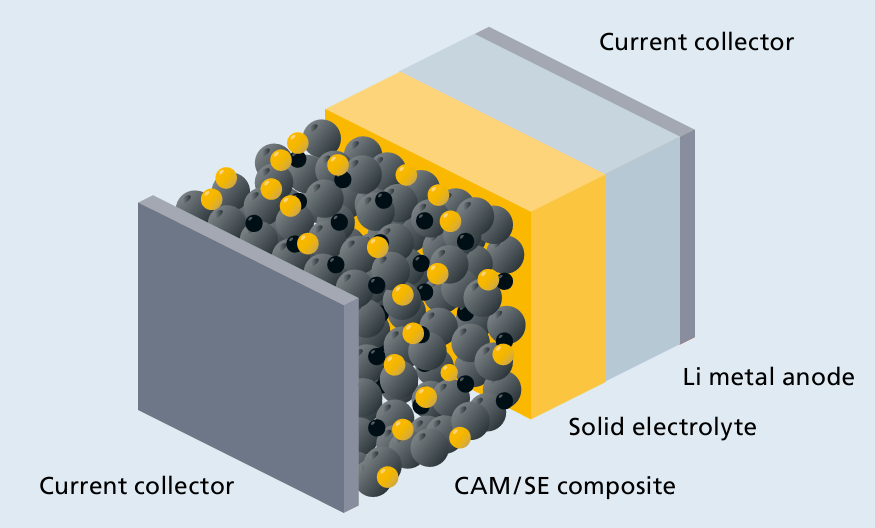Newsom Signs McNerney Bill to Increase Use of Recycled Water – The Silicon Valley Voice

Report on California Senate Bill 31: Advancing Sustainable Water Management
On October 13, Governor Gavin Newsom signed Senate Bill 31 into law, a legislative measure designed to significantly increase the use of recycled water across California. This report analyzes the bill’s provisions and its direct contributions to the United Nations Sustainable Development Goals (SDGs), particularly those concerning water, climate, and sustainable communities.
Strategic Objectives and Alignment with SDG 6: Clean Water and Sanitation
Senate Bill 31, introduced by Jerry McNerney, aims to create a more resilient and sustainable water supply for the state. Its primary objectives are directly aligned with SDG 6, which seeks to ensure the availability and sustainable management of water and sanitation for all.
- Enhancing Water-Use Efficiency (SDG Target 6.4): The law encourages businesses, residences, and government agencies to substitute potable water with recycled water for non-potable applications like irrigation. This conserves freshwater resources, a critical step toward increasing water-use efficiency.
- Improving Water Quality and Reuse (SDG Target 6.3): By promoting the treatment and reuse of wastewater, the bill directly supports the goal of improving water quality by increasing recycling and safe reuse globally. It re-frames wastewater as a valuable resource rather than a disposable byproduct.
- Integrated Water Resources Management (SDG Target 6.5): The legislation is a key component of California’s integrated approach to managing its water supply, addressing challenges posed by drought and increasing demand.
Contributions to Climate Action and Ecosystem Protection
The bill’s impact extends beyond water management, addressing broader environmental challenges outlined in the SDGs.
SDG 13: Climate Action
The legislation is a proactive measure to strengthen resilience and adaptive capacity to climate-related hazards, specifically drought (SDG Target 13.1). By creating a reliable, drought-proof water source, California can better safeguard its communities and economy from the escalating impacts of climate change.
SDG 14: Life Below Water
A key benefit of the bill is the redirection of treated wastewater discharges that would otherwise flow into the ocean. This action directly contributes to SDG Target 14.1, which aims to prevent and significantly reduce marine pollution, thereby protecting coastal and marine ecosystems.
SDG 11: Sustainable Cities and Communities
By enabling more sustainable resource management within urban and residential areas, the bill supports the development of inclusive, safe, resilient, and sustainable communities (SDG 11). It allows for the greening of public spaces like parks without straining precious drinking water supplies.
Key Provisions and Implementation Timeline
Effective January 1, 2026, Senate Bill 31 will enact several key changes to facilitate the expanded use of recycled water. The provisions are designed to remove existing barriers and create new opportunities for water reuse.
- Expanded use of recycled water for irrigating parks and public spaces.
- Reduced restrictions on the use of recycled water for decorative fountains and water bodies.
- Protection for homeowners’ associations from liability related to installing new plumbing systems for recycled water use.
- Authorization for food handling and processing facilities to use recycled water for non-contact purposes, such as flushing toilets and urinals, and for outdoor irrigation under specific conditions.
State Targets and Conclusion
This legislation is critical for helping California achieve its ambitious goal of using 1.8 million acre-feet of recycled water annually by 2040, a significant increase from the current usage of approximately 700,000 acre-feet. In conclusion, Senate Bill 31 represents a pragmatic and forward-thinking policy that aligns state-level action with global sustainability targets. By promoting a circular economy for water, the law enhances California’s resilience to climate change and advances its commitment to the Sustainable Development Goals.
Which SDGs are addressed or connected to the issues highlighted in the article?
Analysis of Relevant SDGs
- SDG 6: Clean Water and Sanitation: This is the most prominent SDG, as the article’s central theme is water management. The new law directly promotes the treatment and reuse of wastewater to conserve freshwater resources, which aligns with ensuring the availability and sustainable management of water.
- SDG 11: Sustainable Cities and Communities: The article discusses a statewide law that impacts businesses, homes, and government agencies. By improving water supply reliability and drought resilience, the law contributes to making cities and human settlements more sustainable and resilient to water-related disasters like droughts.
- SDG 13: Climate Action: The article explicitly links the new law to climate change, stating it will “help safeguard the state during devastating droughts caused by climate change.” This positions the water recycling initiative as a key strategy for climate adaptation and strengthening resilience to climate-related hazards.
- SDG 14: Life Below Water: The article mentions that one of the goals of increasing water recycling is to “re-direct wastewater discharges that go into the ocean.” This action directly contributes to reducing land-based sources of marine pollution, which is a key objective of SDG 14.
What specific targets under those SDGs can be identified based on the article’s content?
Identified SDG Targets
- Target 6.3: By 2030, improve water quality by reducing pollution… halving the proportion of untreated wastewater and substantially increasing recycling and safe reuse globally. The article’s entire focus on a law to “increase the use of recycled water” and treat sewage is a direct implementation of this target.
- Target 6.4: By 2030, substantially increase water-use efficiency across all sectors and ensure sustainable withdrawals and supply of freshwater to address water scarcity. The article states the law’s idea is to “cut back on the use of drinking water for things that don’t require potable water” and “help the state manage its water supply,” which directly addresses water-use efficiency and sustainable supply.
- Target 11.5: By 2030, significantly reduce… the number of people affected… by disasters, including water-related disasters. The article highlights that the law is designed to help the state’s “drought response,” positioning it as a measure to mitigate the impacts of a major water-related disaster.
- Target 13.1: Strengthen resilience and adaptive capacity to climate-related hazards and natural disasters in all countries. The law is described as a “pragmatic approach that will… safeguard the state during devastating droughts caused by climate change,” which is a clear action to build resilience and adaptive capacity.
- Target 14.1: By 2025, prevent and significantly reduce marine pollution of all kinds, in particular from land-based activities. The stated goal to “re-direct wastewater discharges that go into the ocean” directly contributes to achieving this target by reducing a key source of land-based pollution.
Are there any indicators mentioned or implied in the article that can be used to measure progress towards the identified targets?
Mentioned or Implied Indicators
- Volume of recycled water used annually: The article provides a clear, quantifiable indicator to measure progress towards Targets 6.3 and 6.4. It states a baseline of “about 700,000 acre-feet per year” and a specific goal of using “1.8 million acre-feet of recycled water by 2040.” This allows for direct tracking of the law’s effectiveness.
- Volume of wastewater redirected from ocean discharge: While not quantified in the article, this is an implied indicator for Target 14.1. The objective to “re-direct wastewater discharges that go into the ocean” suggests that measuring the reduction in the volume of wastewater being discharged would be a logical way to assess progress.
Create a table with three columns titled ‘SDGs, Targets and Indicators” to present the findings from analyzing the article.
| SDGs | Targets | Indicators |
|---|---|---|
| SDG 6: Clean Water and Sanitation |
6.3: Substantially increase recycling and safe reuse of water.
6.4: Substantially increase water-use efficiency and ensure sustainable supply of freshwater. |
Mentioned: Volume of recycled water used annually (Baseline: 700,000 acre-feet/year; Goal: 1.8 million acre-feet by 2040). |
| SDG 11: Sustainable Cities and Communities | 11.5: Reduce the number of people affected by water-related disasters (droughts). | Implied: Increased resilience of water supply systems during drought conditions. |
| SDG 13: Climate Action | 13.1: Strengthen resilience and adaptive capacity to climate-related hazards (droughts). | Implied: Implementation of water management strategies as a climate change adaptation measure. |
| SDG 14: Life Below Water | 14.1: Prevent and significantly reduce marine pollution from land-based activities. | Implied: Volume of wastewater redirected from ocean discharge and reused. |
Source: svvoice.com
What is Your Reaction?
 Like
0
Like
0
 Dislike
0
Dislike
0
 Love
0
Love
0
 Funny
0
Funny
0
 Angry
0
Angry
0
 Sad
0
Sad
0
 Wow
0
Wow
0


















































.jpg.webp?itok=0ZsAnae9#)





/environment-climate-change-and-health-(ech)/water-sanitation-hygiene-and-health-(wsh)/landfill-tuvalu-36092.tmb-1200v.jpg?sfvrsn=5c21fe40_1#)


















